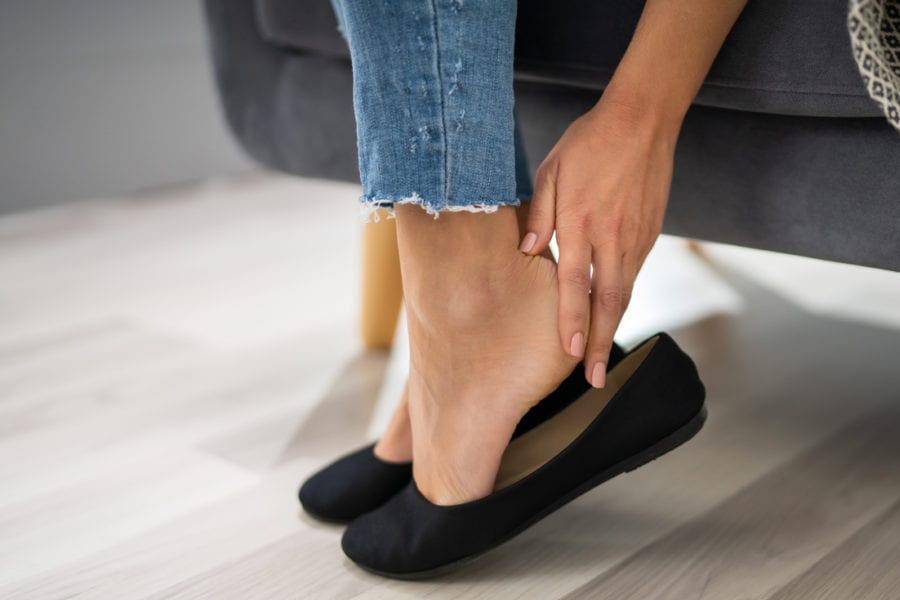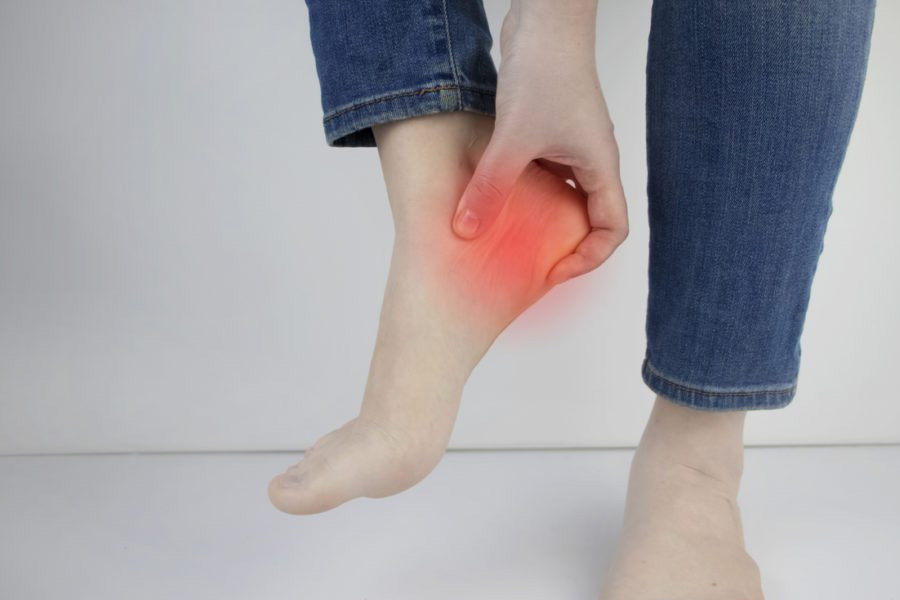Heel spurs are small calcium deposits that form bony protrusions at the bottom of the heel bone. A heel spur doesn’t always cause pain or any obvious symptoms, but it may cause chronic or stabbing pain that makes walking difficult.
Heel spurs are primarily caused by plantar fasciitis. Plantar fasciitis is the inflammation of the thick band of tissue (the plantar fascia) that runs along the bottom of the foot, between your heel bone and your toes, causing heel pain. The resulting degradation and tiny tears of the plantar fascia can cause susceptibility to developing a heel spur because the bone isn’t as well-cushioned and protected from the impact of walking.
Symptoms of plantar fasciitis are often worse first thing in the morning or after long periods of standing, and it may be difficult to raise the toes of the affected foot. Risk factors that can make you more prone to plantar fasciitis include:
- Obesity
- High foot arches
- Flat feet (low or no arches)
- Frequently wearing poorly fitting shoes
- New or increased physical activity
- Overuse or repetitive activities on the feet, such as running, jogging, or jumping
- Gait abnormalities
- Standing for long periods of time every day
Treatment for heel spurs will address the cause of the spur and will also alleviate pressure on the area of the spur. Let’s talk about some of the key treatments for heel spurs, and where you can go here in the Cincinnati area for an efficient medical evaluation of your foot and treatment that provides relief of your heel pain once and for all.
Effective Treatment for a Heel Spur
If you have heel pain or suspect you have heel spurs, a podiatrist can evaluate and diagnose your condition in order to recommend the most appropriate treatment – which may include one or more of the following:
Custom Orthotics
Custom orthotics are prescribed by a podiatrist and are specially designed, custom-made shoe inserts that are engineered to treat your specific foot issue. They help to position and cushion your feet correctly and to provide appropriate support for your ankles.
You may even be recommended special orthotic shoes, which are so comfortable you will want to wear them everywhere. Orthotics improve foot function and minimize stress forces that can lead to foot pain and bone deformity, such as heel spurs.
Physical Therapy
Physical therapy can be very helpful in treating your heel pain and in improving foot function, particularly when caused by tight muscles in the feet and calves. A customized exercise program can be developed by your therapist to help stretch and strengthen the plantar fascia and Achilles tendon, and these exercises will help to relieve pain, inflammation, and tightness.
Shockwave Therapy
Your doctor may recommend shockwave therapy to treat your chronic heel pain. This treatment is a quick, noninvasive, physician-administered procedure that is performed directly to the heel in a manner similar to ultrasound.
Shockwave therapy involves a unique set of pressure waves, delivered through an applicator that is moved over the affected area in a circular motion. This treatment aims to:
- Enhance blood circulation
- Stimulate the metabolism and other processes
- Accelerate healing to gradually regenerate healthy tissue
Because this treatment is non-invasive, it offers a number of extra benefits including no downtime after the procedure, no scarring, and no risk of infection. Usually, more than one treatment is necessary to alleviate your heel pain completely.
Heel Spur Relief in Cincinnati, Ohio
If you have heel pain caused by plantar fasciitis or heel spurs, contact the experienced podiatrists here at Cincinnati Foot & Ankle Care. We specialize in treating foot pain of all kinds, including heel pain and heel spurs, and we can evaluate your condition and recommend the best treatment options for you.
To arrange a consultation or to find out more, call us today at our location near you or request an appointment via our online form now. We look forward to helping you get back to the active lifestyle you enjoy!



